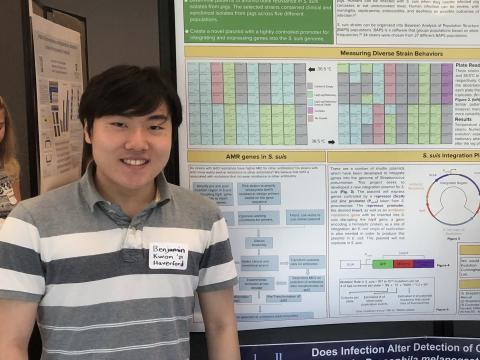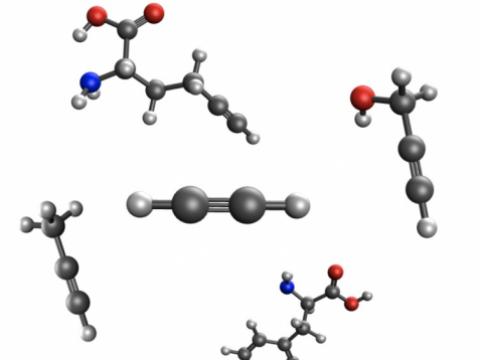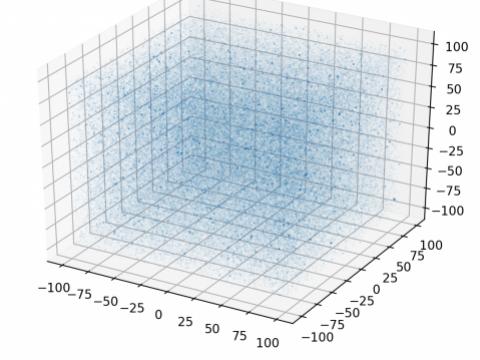We used data from the NICER x-ray telescope on the ISS in order to create a model for Earth's atmosphere, and specifically a model that we can use to locate the ISS in it's orbit as it watches a bright source emerge from behind the rocky Earth.
You are here
Headline Archive for Marielle Latrick
-

-
We point out that there's an error in stating that the "Earth terms" in the timing residuals are in phase across all the pulsars. We define two types of the "Earth terms" and prove that the Earth terms with antenna functions are generally out of phase.
-

I worked on developing a pipeline to use next-generation sequencing to detect eukaryotic microbes inside ticks.
-

We use X-Ray observations from NICER on PSR B1937+21 to attempt to detect red noise. We found that using current data alone we cannot make a detection, but with 8x the length of our data set, we can successfully make a detection.
-
Nature serves as a wonderfully rich source of medically relevant molecules. Here, we developed an effective bioinformatic workflow for evolutionary analysis of biosynthetic gene clusters, aiding in the discovery of novel polyketide pathways and products.
-

We studied the X-ray emissions of three pulsars using the Neutron star Interior Composition Explorer (NICER) in order to analyze their pulse-to-pulse intensity modulation, or how individual pulses differ in brightness from one to the next.
-

I resumed my previous research in creating a novel zinc-regulated gene expression system for S. suis to serve as a neutral marker that will distinguish and quantify different strains for experimental evolution experiments in the future.
-

North Atlantic whales, following their zooplankton prey, stray into unprotected fishing zones and shipping routes, leading to high whale mortalities in the past 10 years. A predictive model available for commercial use can prevent whale strikes.
-
Serotonin Receptors Modulate Decision-Making Through Subtype Specific Mechanisms, Emma Iacobucci '21
This summer Cole Roland and I continued the work of Spring 2020 Biology Superlab. We used CRISPR and drug treatments to target specific serotonin receptors to investigate the mechanism through which serotonin modulates decision-making in zebrafish.
-
I participated in a bioinformatics project where we looked at the biosynthesis of Vitamin B12 in several genera of bacteria. I bioinformatically cataloged genomes as producer, nonproducers, salvagers, and remodelers of vitamin B12 for analysis.
-

The goal of my research this summer was to begin the process of creating a spectroscopic map for alkynes. Over the summer I used quantum chemistry software to look at the specific frequencies of 7 alkyne containing molecules.
-
This research focuses on the search for useful chemical products produced by non-Actinobacteria through the study of the cyanobacterium Gloeocapsa sp. PCC 7428.
-

We searched for transitions of HCN and HCO+ in planetary nebulae in order to further understand their molecular content. Counter to previous models of molecular depletion, our work suggests a relative lack of correlation between abundance and nebular age.
-
I developed a numerical simulation code for the temperature and current of porphyrin nanowires after ion bombardment. I also coded a virtual version of an optics lab for remote instruction during the COVID-19 pandemic and to supplement online instruction.
-

We gauge the ability of galaxy surveys to test axion dark matter models. We simulate universes with axion dark matter and observe them with hypothetical analogs of real surveys. This lets us preview an axion dark matter universe as it would appear to us.